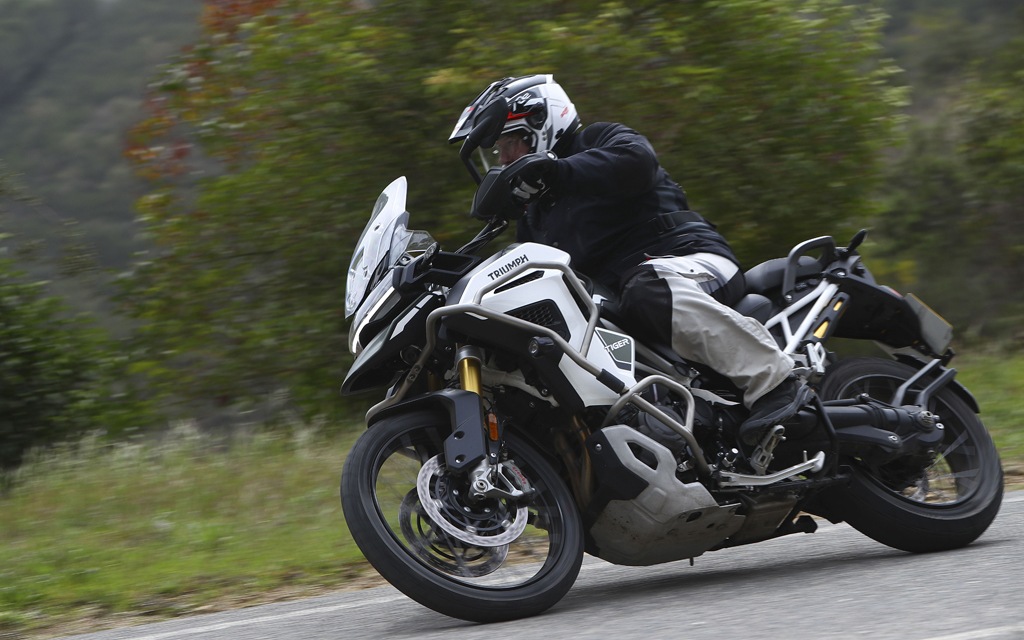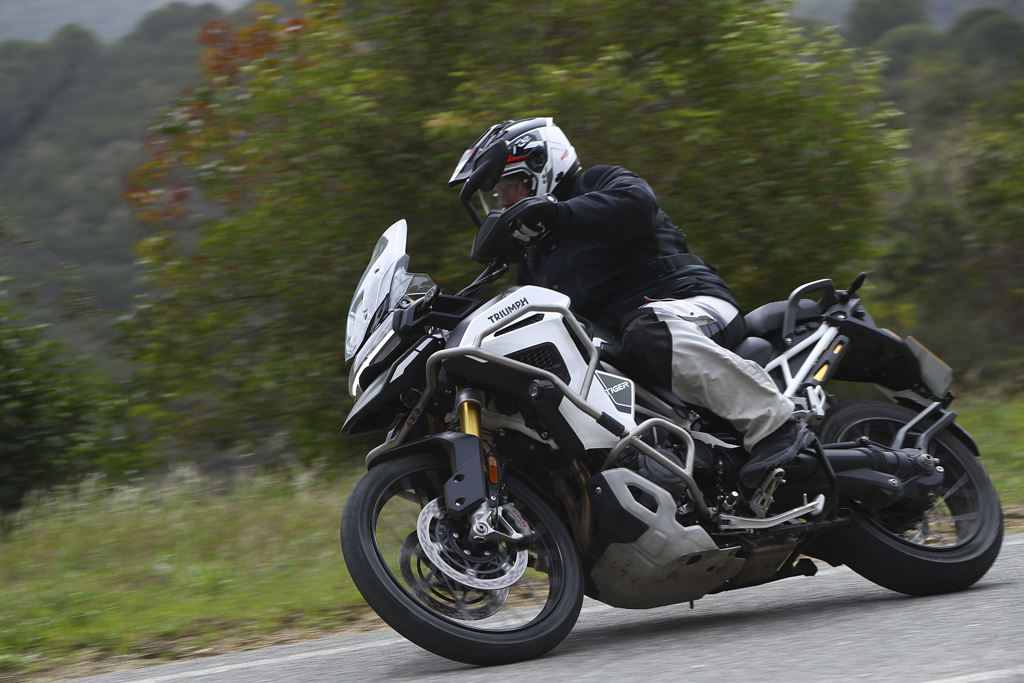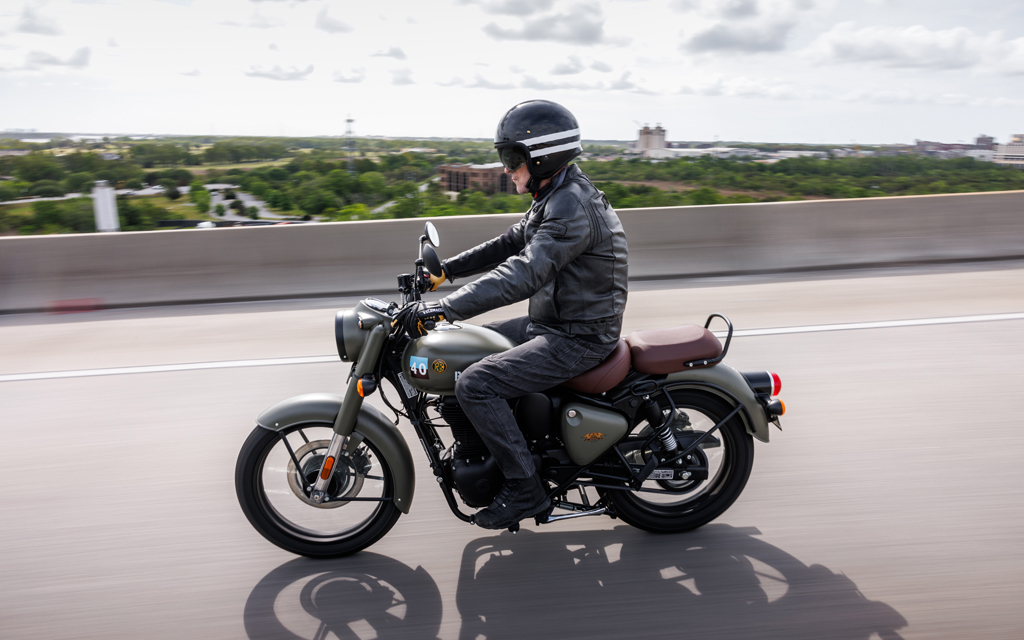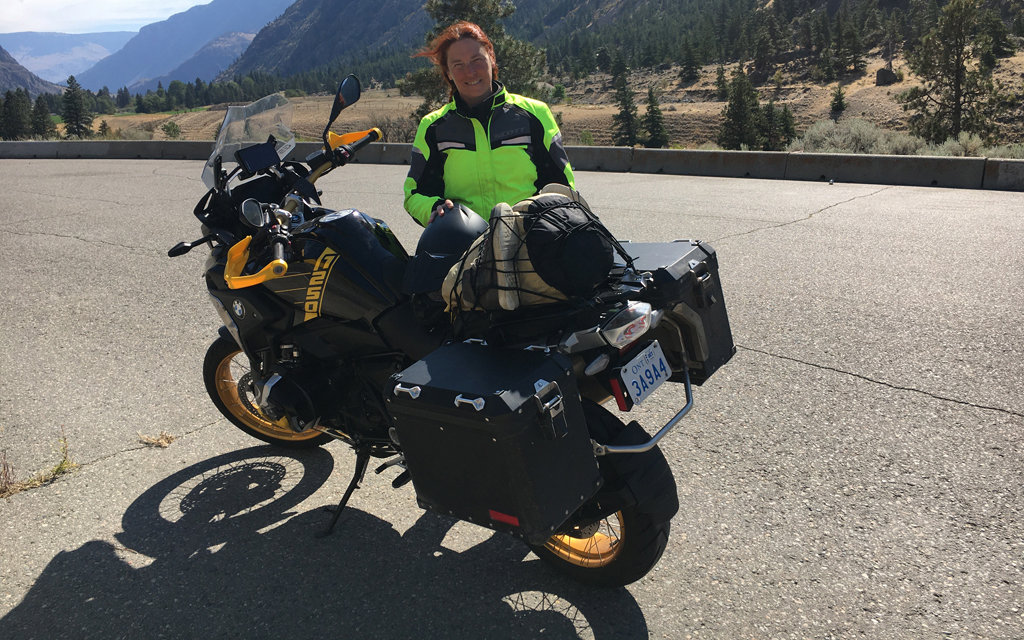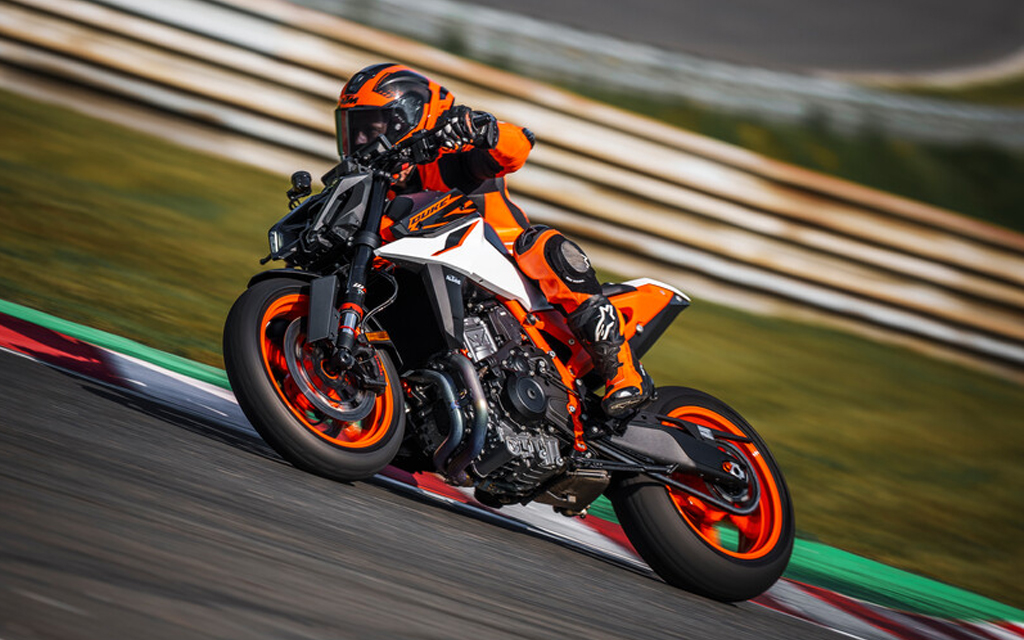*This article was published in Vol. 52 No. 3 of Cycle Canada digital magazine.
When Triumph gets serious about adventure
Two distinct families, five models, an impressive diet, the latest suspension tech and electronic aids and a new three-year warranty with 16000 km service intervals make Triumph’s new Tiger 1200 more desirable than it’s ever been.
Albufeira, Portugal. Even before learning all about Triumph’s new Tiger 1200 details, its much slimmer looks spill the beans: it’s one seriously reworked machine. The transformation is such that from certain angles it’s easy to be fooled into thinking it’s a Tiger 900 rather than a 1200. But it’s no illusion. Triumph claims the 2023 model is up to 25 kg lighter (the number varies depending on the variant), a spec that can only mean very significant work went into developing the new platform.
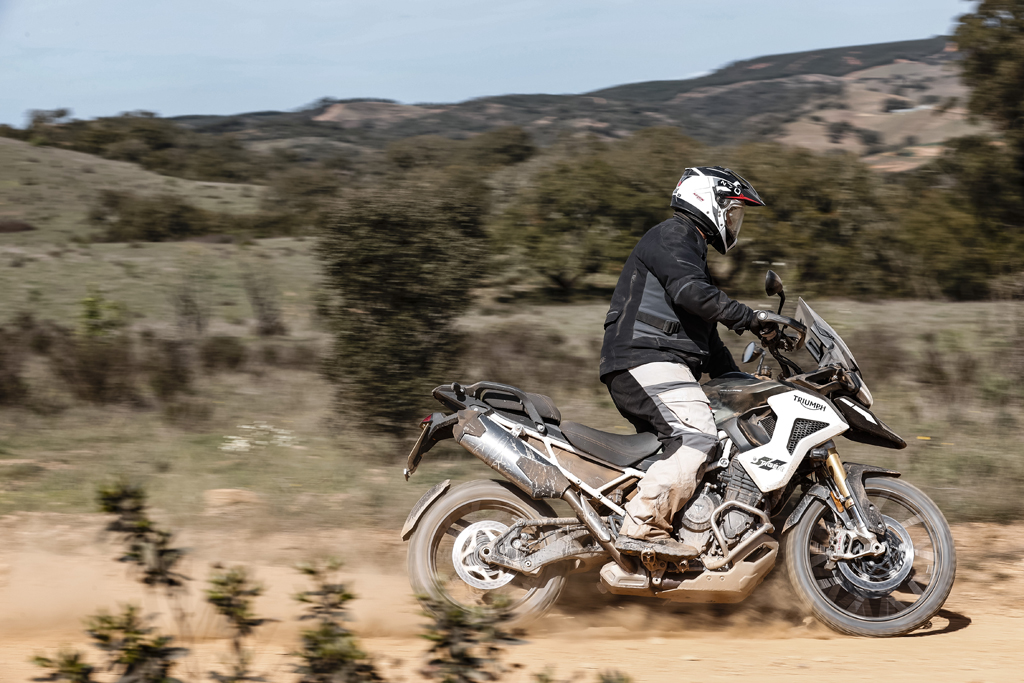
Two families, five variants
It has become common for Triumph to offer several variants of its new ADV models and to play around with their names from year to year. And so, for 2023, the new Tiger 1200 range is split in two families totaling five models and mimics the latest Tiger 900 naming strategy with road-biased GTs (formerly XRs) and more off-road capable Rallys (formerly XCs).
Three GT variants are available. Simply called GT, the white-only base model ($22300_240 kg curb weight) is the less equipped and less expensive, but also the lightest of the new Tiger 1200s. Mechanically identical to other GTs, its characteristics include three ride modes (Rain, Road, Sport), a full array of Inertial Measurement Unit-controlled rider aids, Brembo Stylema brake calipers, 7-in circular instrumentation with TFT color screen and connectivity functions, particularly advanced Showa semi-active suspension with 200 mm travel, 18-in rear and 19-in front cast aluminum wheels mounted with Metzeler Tourance tires, high and low seat positions, keyless ignition, small under seat storage space with USB plug and LED lighting.
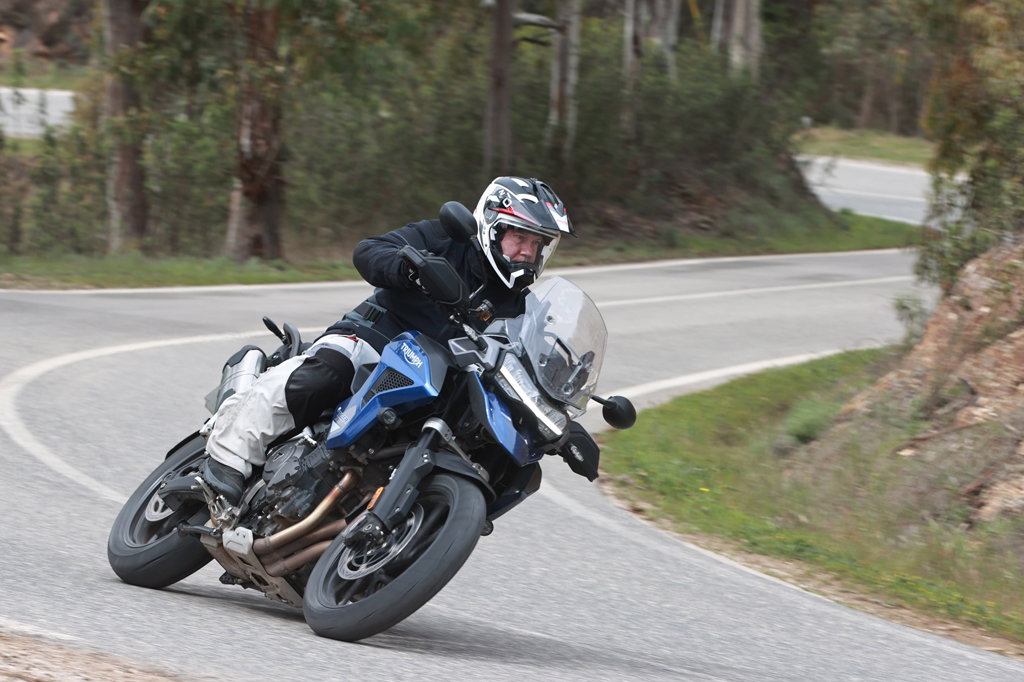
For an additional $2500, the GT Pro ($24800_245 kg curb weight) adds to the GT’s equipment list a cruise control, a center stand, heated grips, an aluminum skid plate, cornering lights, an up/down quick shifter, hill-hold assist and two more riding modes, Off-Road and Rider.
As for the additional $2800 the GT Explorer ($27600_255 kg curb weight) costs over the GT Pro, it adds a big 30L fuel tank (vs 20L on non-Explorer models), tire pressure monitoring, rider and passenger heated seats, engine protection bars and blind spot radar —a technology that definitely deserves to become standard on all street bikes, by the way. Finally, the GT Pro and GT Explorer are also available in blue or black.
The Tiger 1200 Rallys use a different frame than the GTs to position their engine in a way that benefits weight repartition for off-road riding. Available in green, black or white, they also differ from the GTs with longer travel suspension (220 mm), 18-in rear and 21-in front tubeless spoke wheels mounted with Metzeler Karoo tires (Triumph recommends Michelin Anakee tires for more serious off-roading) and a sixth riding mode, Off-Road Pro. There is no base Rally version equivalent to the GT. The Rally Pro ($25800_249 kg curb weight) basically has the same equipment list as the GT Pro and, other than its additional fuel tank protection bars, the same is true for the Rally Explorer ($28700_261 kg curb weight) vs the GT Explorer.
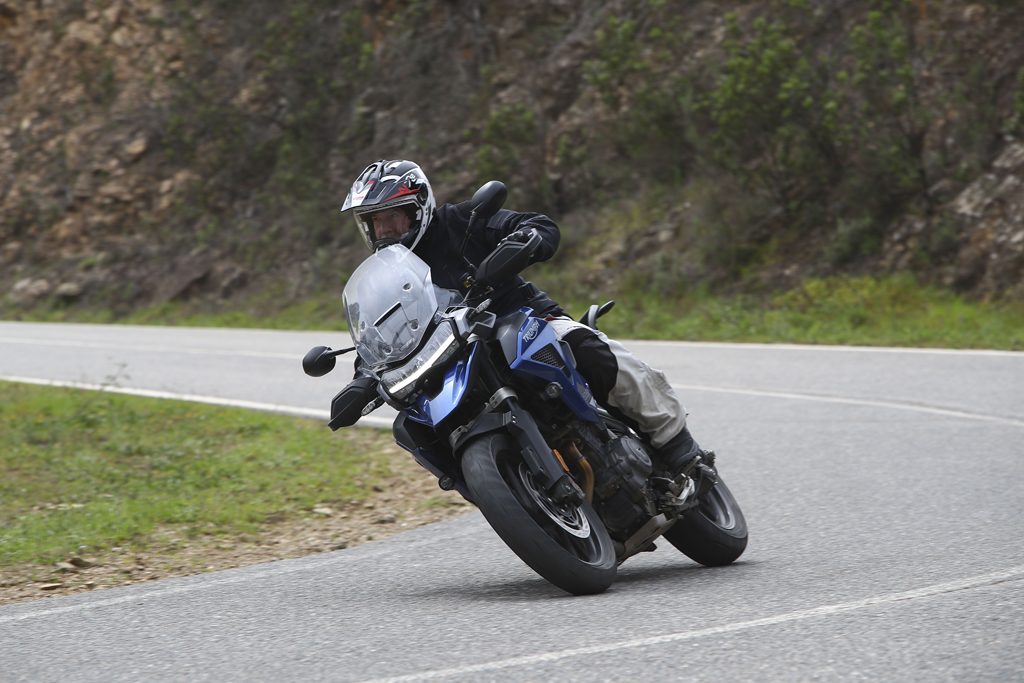
A true new gen
2023 Tiger 1200s are completely new motorcycles that share nothing with the previous generation. It’s precisely because every aspect of the model has been rethought that Triumph was able to lighten it that much. Amongst the parts most responsible for the weight cut is a new double-sided vs single-sided swing arm, a simplified shaft drive and a rear shock mounted directly to the swing arm rather than through a linkage. The changes save 1,5 kg of unsprung weight. The new frame —now with a replaceable bolt-on aluminum rear subframe— is also worthy of mention as it’s 5,4 kg lighter than before.
The new inline 1160 cc Triple produces 148 hp, about ten more than the old 1215 cc engine, and now uses a T-plane crank that mimics the firing characteristics of a V-Twin. It does so with two close explosions followed by a slight pause before the third one. Each explosion was spaced equally on the previous engine. The result is V-Twin-like character in terms of sound and feel, along with better traction off road. Generous torque is available from low revs and peaks at 96 lb-ft, a 6 lb-ft improvement. Another interesting feature of the new Triple is a cooling system that uses a pair of lateral radiators. Compared to the last gen’s central radiator, the new design allows for the engine to be moved forward and eliminates risks of rad punctures from rocks flying off the front tire.
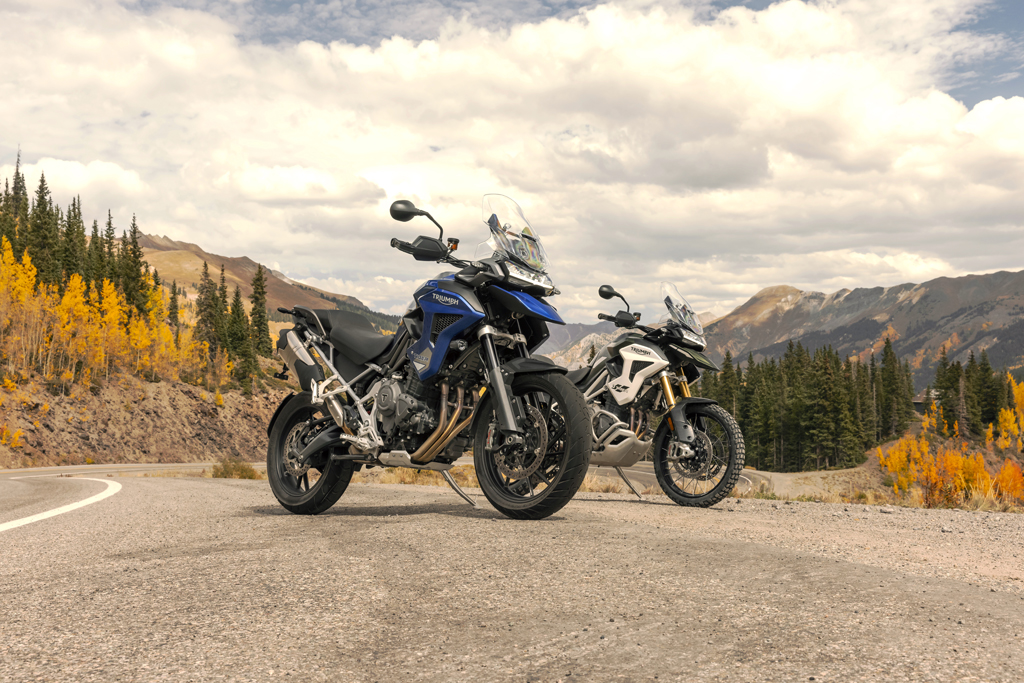
Pavement, corners and big differences
With so many versions and with families biased toward road or dirt, it was wise from Triumph to organize the new Tiger 1200 press launch over two days. The first was spent on the road under great weather, which allowed for a fast but not excessive pace. We left our Albufeira hotel, on the Atlantic coast, and headed for the country side where we were immediately welcomed by extraordinarily fun roads. Europe really is motorcycling paradise and this launch only confirmed it one more time. What else could you call the combination of infinitely twisty roads, good pavement, nice vistas, almost non-existent car traffic once away from cities, and cops that are either a no show or apparently not interested in us? It’s also the type of environment that fits adventure motorcycles to a T, especially the big displacement models as it lets them showcase their power and character.
In that context, the new Tiger 1200 is an absolute charm. I began my day on the GT Pro. Reasonable seat height for the class (850 mm in the low position), comfy seat, perfectly balanced ergos for commute, travel or everything in between, on the fly adjustable windscreen, a thousand and one modes and functions, complex settings, but not hopelessly so, excellent brakes, impressively natural feeling semi-active suspension, heated grips, fun and intuitive handling, remarkably light general feel considering the displacement, a Triple that sounds almost exactly like a V-Twin, one of motorcycling’s best quick shift systems, pronounced feel of refinement… The new Tiger definitely has a lot going for it. As for the less than perfect stuff, there’s very little of it. But there is some.
The first thing that felt out of place was a slight play in the driveline. I immediately noticed it when we began our ride, during off-on throttle transitions. It’s less apparent in urban riding or on the highway where the play can easily be masked with a smooth throttle hand. But on the twisty roads we were on, the play was obvious and most noticeable mid-corner when feathering the throttle to fine tune speed. It isn’t a major flaw by any means, and even in corners it’s possible to smooth things out with precise and steady throttle movement. But it’s still annoying, probably even more so because it contrasts with the pleasantly refined way the rest of the motorcycle functions. There’s also the windscreen; it generates some buffeting when raised, a problem I solved by simply keeping it at or close to its lowest position. And finally, the Triple vibes a bit at higher revs, which is mostly felt through the grips. All in all, good marks.
After the GT Pro, I switched to a Rally Explorer on street tires. Right away, it felt very different because of the substantial additional weight combined with the higher seat. With its wall-to-wall protection bars and its huge 30L fuel tank, the Rally Explorer obviously imitates the big and heavy Adventure version of the R1250GS. And just as is the case with the Beemer, the over the top concept mostly attracts buyers seduced by the war machine styling. But be advised: these are high and heavy bikes with borderline extreme proportions that sabotage many of the great qualities of the regular versions.
That being said, to be fair, it doesn’t mean the Tiger 1200 Rally Explorer is totally lacking merits. It does, after all, share the superb platform of the Rally Pro. Since a good list of accessories including luggage sets is available for it and since the range allowed by the 30L tank is immense (Triumph says 600 km), the Explorer can legitimately take on the role of a go anywhere touring machine. That is, as long as the rider has the physical strength and experience to properly handle a motorcycle this high and heavy.
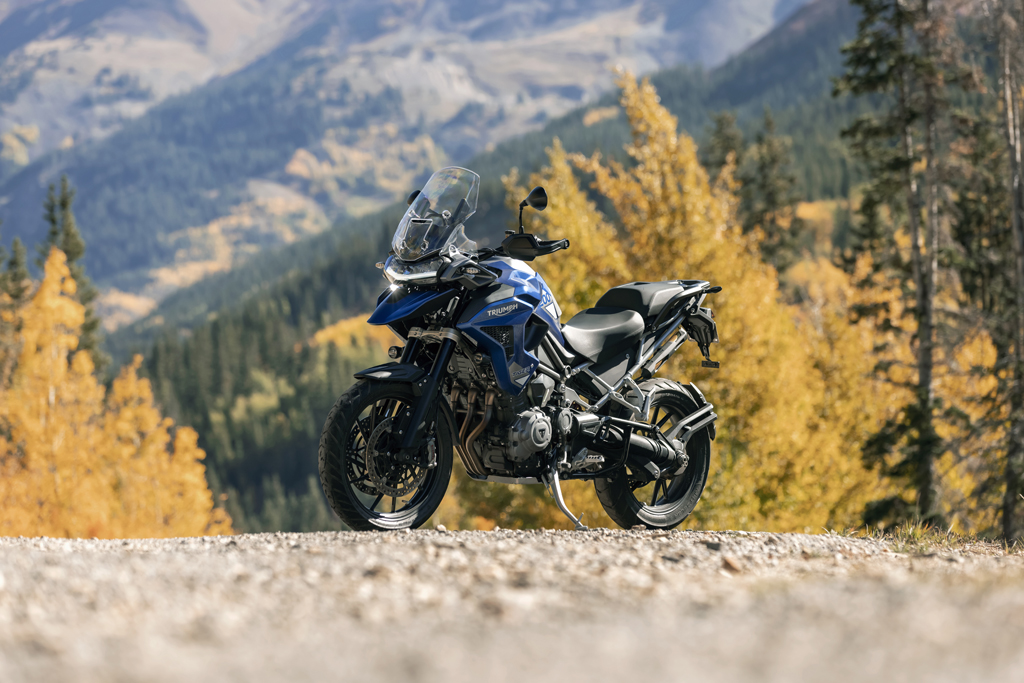
Dirt, doubts and tricks
The Rally Explorer’s beastly proportions got me somewhat nervous about the next day’s off-road ride. I didn’t know what models would be available, but one thing was certain : if I had to muscle that thing in sand or mud, it would be a long day. Those doubts played with my mind and I began to hope for the lighter GT on off-road tires for the dirt test, or even a GT with, why not, a 21-inch front wheel, or even better… The Triumph guys, with whom I had ridden many times on previous adventure launches, told me not to stress and to give an honest chance to the Rally Pro, the only bike we’d be riding on the off-road day. It was sound advice.
The next morning, as promised, a row of Tiger 1200 Rally Pros was waiting for us. Michelin Anakee tires had been mounted and the handlebar had been slightly raised to facilitate riding standing up, but they were otherwise stock. Knowing I was a bit apprehensive at the Rally’s seat height, a Triumph engineer came over and shared a trick that was never mentioned during the technical presentation. On the new Tiger 1200, the rear spring preload is electronically set according to the weight the motorcycle is carrying (rider, passenger, luggage, etc.). That setting is accomplished by an electric motor inside the shock. The rider maintains the ability to adjust damping through the menus. Well, turns out that on Rallys, once damping is set below about halfway by the rider, the shock automatically lowers the rear of the bike slightly. Just like that, I had a Rally with a seat height nearly equivalent to a GT’s.
And so, it’s with a Rally Pro set up that way that I began my off-road day. Another interesting feature of the Tiger 1200 is that if the menu is already set on damping, then the rider can make adjustments on the fly by only pushing the left-hand control joystick up or down, which is very practical. I began the ride with a certain setting, then when speed increased and trails got rougher, a simple tap up on the joystick stiffened damping. That also raised the seat to its normal 875 mm height, but as I had familiarized myself by then with the wonderfully inviting manners and pleasantly lighter weight of the Rally Pro (vs the previous day’s Explorer), seat height wasn’t an issue anymore. Actually, it felt good being perched up on the Rally Pro and with the confidence I had in tire traction even on mud or sand, I began to feel invincible. A feeling for which must be credited: the exceptional performance of the suspension, the impressive lightness of the bike and the remarkable agility for this class of ADV. All these qualities were noticed the previous day on the road. But in the dirt, they become precious advantages that considerably improve the riding experience by making it less stressful. As for the 148 hp Triple, it turned out to be a very pleasant and cooperative engine off-road where I very much enjoyed steering the bike by sliding the rear (with the electronics set to allow it), something made easy by the always available torque. And as far as the driveline play noted on the road is concerned, it’s still present off-road, but manifests itself in that environment with a metallic knock when the throttle is opened. In the dirt, I ended up riding without paying much attention to it.
An undeniably successful result
Triumph opened its new Tiger 1200 presentation somewhat unusually by directly targeting BMW’s R1250GS. Such a direct comparison is definitely uncommon with manufacturers and reveals the Brits are so proud and confident in their new Tiger they really believe it to be superior to the most established and respected model of the big ADV class. If I was forced to comment on that comparison, I’d say the qualities of the GT Pro in general do indeed seem similar to those of a GS, but that a direct comparo would be complicated by the significantly different riding experience each brand offers. The same line of thought goes for the behemoths that are the Explorer and Adventure versions of the Triumph and the BMW. But if we get back to the new Tiger 1200 for a minute, the verdict is simply that it’s excellent. The various versions should allow riders of quite different interests and priorities to find ADV happiness. Those who mostly remain on pavement will love the GT’s versatility, while the Explorer should attract all the attention its typical buyer craves. But the treasure of this new Tiger 1200 family is without a doubt the Rally Pro: it offers all the great manners of the GT on the road, is a seriously capable off-roader and stays clear of the excesses of the Explorer.
